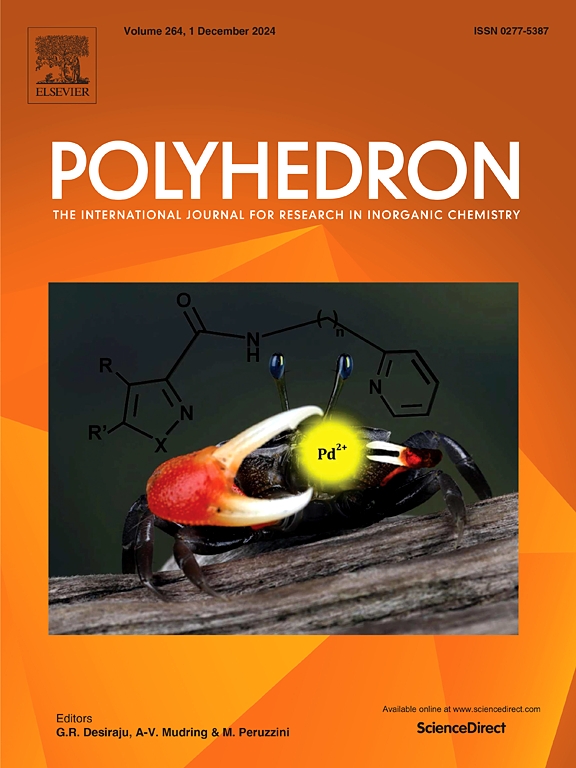Valonia aegagropila-shaped manganese oxide with hybrid Battery-Supercapacitor behavior for lithium-ion storage
IF 2.4
3区 化学
Q2 CHEMISTRY, INORGANIC & NUCLEAR
引用次数: 0
Abstract
Manganese-based oxides exhibit diverse applications and demonstrate exceptional performance in the field of electrochemical energy storage and conversion. However, the utilization of transition metal oxides as anode electrode materials in lithium-ion batteries faces several challenges, including inadequate cycling stability and poor conductivity. To address these issues, a unique nanostructured single-metal oxide, specifically manganese oxide with valonia aegagropila-shaped morphology, was achieved using a uniform thermal decomposition approach. The valonia aegagropila-shaped Mn2O3 anode material exhibits remarkable discharge specific capacity at low current densities, with an initial discharge specific capacity reaching up to 1280 mA h g−1 and maintaining a consistent specific capacity of approximately 830 mA h g−1. During this process, reversible oxidation–reduction reactions of Mn3+ ions occur, thereby enhancing the stability of Mn2O3 anode. Moreover, the valonia aegagropila-shaped Mn2O3 anode exhibits a hybrid behavior of battery and supercapacitor according to the electrochemical kinetic analyses. This might open new avenues for the design of manganese-based oxides with various morphologies anode materials to achieve high-performance energy storage.

具有混合电池-超级电容器性能的Valonia aegagropila形氧化锰用于锂离子存储
锰基氧化物具有广泛的应用前景,在电化学能量存储和转换领域表现出优异的性能。然而,过渡金属氧化物作为锂离子电池负极材料的应用面临着循环稳定性不足和导电性差等挑战。为了解决这些问题,使用均匀热分解方法获得了一种独特的纳米结构单金属氧化物,特别是具有valonia aegagropila形状形态的氧化锰。该材料在低电流密度下表现出显著的放电比容量,初始放电比容量可达1280 mA h g−1,并保持约830 mA h g−1的稳定比容量。在此过程中,Mn3+离子发生可逆的氧化还原反应,从而增强了Mn2O3阳极的稳定性。此外,电化学动力学分析表明,锰氧化阳极具有电池和超级电容器的混合特性。这可能为设计具有不同形态阳极材料的锰基氧化物以实现高性能储能开辟了新的途径。
本文章由计算机程序翻译,如有差异,请以英文原文为准。
求助全文
约1分钟内获得全文
求助全文
来源期刊

Polyhedron
化学-晶体学
CiteScore
4.90
自引率
7.70%
发文量
515
审稿时长
2 months
期刊介绍:
Polyhedron publishes original, fundamental, experimental and theoretical work of the highest quality in all the major areas of inorganic chemistry. This includes synthetic chemistry, coordination chemistry, organometallic chemistry, bioinorganic chemistry, and solid-state and materials chemistry.
Papers should be significant pieces of work, and all new compounds must be appropriately characterized. The inclusion of single-crystal X-ray structural data is strongly encouraged, but papers reporting only the X-ray structure determination of a single compound will usually not be considered. Papers on solid-state or materials chemistry will be expected to have a significant molecular chemistry component (such as the synthesis and characterization of the molecular precursors and/or a systematic study of the use of different precursors or reaction conditions) or demonstrate a cutting-edge application (for example inorganic materials for energy applications). Papers dealing only with stability constants are not considered.
 求助内容:
求助内容: 应助结果提醒方式:
应助结果提醒方式:


